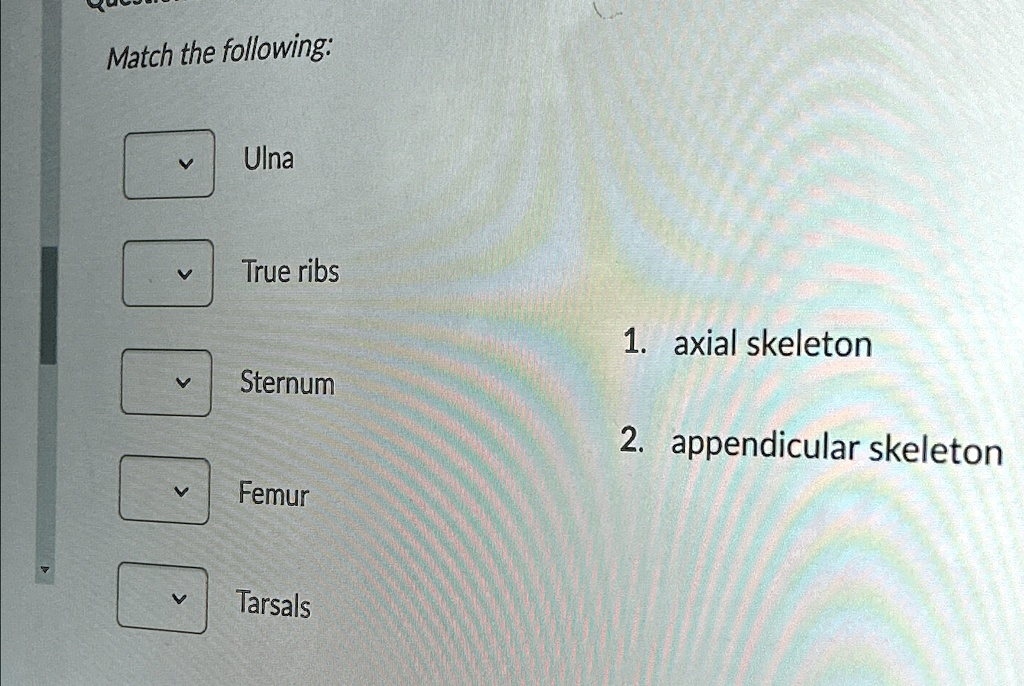Match the following: ◻ Ulna True ribs ◻ Sternum ◻ Femur ◻ Tarsals Qae Match the following. Ulna True ribs 1.axial skeleton Sternum 2.appendicular skeleton Femur Tarsals

The Correct Answer and Explanation is:
Here are the correct matches:
- Ulna – 2. Appendicular skeleton
- True ribs – 1. Axial skeleton
- Sternum – 1. Axial skeleton
- Femur – 2. Appendicular skeleton
- Tarsals – 2. Appendicular skeleton
The human skeleton is divided into two major categories: the axial and appendicular skeletons. This classification reflects both structure and function.
The axial skeleton forms the central supporting axis of the body. It includes the skull, vertebral column, and thoracic cage. Its primary role is protection. For example, true ribs and the sternum help form the thoracic cage, which protects vital organs like the heart and lungs. True ribs are directly attached to the sternum via costal cartilages and provide structural integrity to the chest. The sternum, or breastbone, is a flat bone located at the center of the chest, serving as a point of attachment for ribs and clavicles.
The appendicular skeleton comprises the bones of the limbs and the girdles that connect them to the axial skeleton. Its purpose is to support movement. The ulna is one of the two long bones in the forearm, essential for elbow and wrist articulation. The femur, or thigh bone, is the longest bone in the body and is central to walking and running. The tarsals are a set of small bones located in the foot that support weight-bearing and mobility.
Understanding this division helps medical professionals, therapists, and students analyze how different bones contribute to movement, posture, and protection. It also aids in diagnosing injuries and developmental conditions. From a functional standpoint, the axial skeleton offers stability and protection, while the appendicular skeleton enables movement and interaction with the environment.
